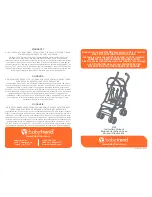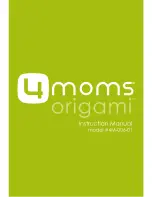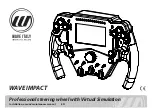
Note that there are two kinds of
maximum credit allowed
: one for cash vending (
MONEY
mode), and one for
debit card vending (
CARD
mode). In
MONEY
mode,
maximum credit allowed
refers to the maximum amount
of money credit that can be displayed during the current vend cycle.
Maximum credit allowed
in
MONEY
mode
protects the controller from excessive payouts of change by dynamically accepting or rejecting certain coin and
bill types depending on the
maximum credit allowed
. This is the
maximum credit allowed
that is displayed at
the beginning of each vend cycle (prior to a possible card insertion).
To see how
maximum credit allowed
works in
MONEY
mode, suppose it is set to nine dollars. In this case, $1,
2, and 5 bills
may
be accepted (if change is available, and nine dollars is not exceeded by the insertion of a
particular bill), but $10 and 20 bills can
never
be accepted, because their insertion would exceed the
maximum
credit allowed
(for cash vending) in all cases.
In
CARD
mode,
maximum credit allowed
refers to the maximum value of card credit that can be displayed
during the current vend cycle. In principle, all coins and bills will be accepted (if card revaluation is enabled), as
long as the
maximum credit allowed
(for cards) is not exceeded by the acceptance of that coin or bill. The
maximum credit allowed
(for cards) is displayed only when a card is inserted.
The
maximum credit allowed
for cash vending is programmed in the controller, but the
maximum credit
allowed
for card vending is programmed in the card reader. See the separate card reader manual
(TDA2Manual.pdf) for further information. The default value for
maximum credit allowed
for cash vending is
$6; for card vending, it is $100.
In
MONEY
mode, you may retrieve your remaining credit (change) at any time by pressing the coin return
plunger (see figure 2). In
CARD
mode, you may retrieve the remaining credit on your card (and the card itself)
by pressing the coin return plunger on the top of the controller, or by pressing any button on the front of the card
reader face plate (see figure 5).
In both cases, if during a vend cycle the display credit dips below the single copy price for the copy type selected,
the remaining credit (if any) on the display is automatically paid out in coins, or the inserted card is automatically
ejected (with the remaining credit, if any, written to it), and the vend cycle is completed.
Note that there is always a small wait of a few seconds before change is paid out or an inserted card is ejected.
This “time delay” is needed to allow the controller to monitor (and charge) for copies still coming out of the copier.
KEY OPERATOR OPERATION
The key operator is defined as the person who possesses the bypass key and the controller box key. The key
operator can do three things:
* Program the controller,
* Tally all the readouts, and reset the current counters,
* Inventory (or dump) any amount of coins currently in the payout tubes.
A flowchart at the end of this manual should help you understand the instructions that follow.
Programming the Controller
Programming your
M7500 / M7506 Controller
can be done with the copier
ON
or
OFF
. Turn the bypass
keyswitch to the horizontal (
ON
) position, and
press the little pushbutton
on the main board inside the controller
for a few seconds (see figure 1). You are now in
SETTINGS
mode.The display will say “READOUTS”. Press the
white button on the top of the controller to advance the display to “PROGRAMMING” (see figure 2).
- 3 -






























